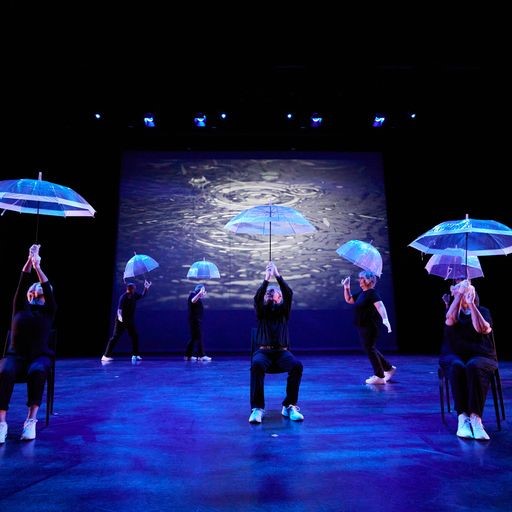Canberra’s only dance class for deaf people has smashed the stereotypical construct that you need music to dance – music comes from within.
Deaf Butterflies – DeafACT is an exceptional dance class, where students turn conventional dance on its head and move their bodies to make music, not unlike a musician playing an instrument to create music.

Whether it’s being still, or doing continuous movement, or through vibration, this class makes beautiful music under the guidance of their dance teacher, Debora Di Centa, and Auslan interpreter, Sheree Murray.
“Human movement and rhythm – the energy of the body – builds a level of expression and meaning,” Debora said. “We can play with the body we have, it doesn’t matter if you’re young or old or disabled, because we went beyond that. We transmit something through the presence of the body in space.”
Every Friday the group meets at Belconnen Arts Centre, possessing skills that some professional dancers might envy – heightened visual and tactile senses and an acute connection to their bodies.
The class only uses music to enable the teacher to establish rhythm. When we caught up for a chat, we warmed up with a plié and some other gentle ballet positions.
Standing in a circle are deaf couple Vera and Max Hall, Helen Trendos, Vikki McDonough, Greg Ophel, and Warren Love. Regulars Christine Yerbury and Belinda Dawson couldn’t make it today and they were missed.
Warren, who’s also a great mime artist, said the class was “just wonderful”.
“When we’ve had the drumming classes and were able to feell the vibrations, we’re all deaf but we can feel the vibrations and feel that movement and energy,” Warren said. “It’s really good for deaf people, it gives some exposure to music and that sense of sound, even if we can’t necessarily hear it.”
The African drumming was taught by a guest artist and allowed the students to feel the music through the vibrations in the floor, through their feet. The class also practiced marching.
“We know the timing but the dancers don’t, so they are trained to follow us and they’re coordination is very high,” Debora said. “It looks as though they are hearing the music, but they are not. That is the magic.”
Debora is much more than a dance teacher, she is also a choreologist (the literacy or notation of dance and movement) and studied at the London Conservatorium of Music and Dance.
“I can describe and analyse movement as you could do with music,” Debora said. “This knowledge helps a lot because the class’s embodiment is very high-quality so I can push them to try and control the movement even further, like professional dancers.”
Dance student Vera said she always looked forward to coming and felt lucky to have the opportunity. Her husband, Max, doesn’t mind a bit of rap dancing. Helen said she loved drumming because “you’re feeling it and also watching it”.
“As you’re dancing you feel that percussive element,” Helen said. “You feel it though your body. We’re copying while we’re dancing and we’re used to relying on our eyes to see what’s going on, this is how we’ve grown up. The teachers are following the music but we can sense that rhythm.”
Class-mate Greg said he felt the music inside of him.
“You feel that connection with it, there’s music in your spriit,” Greg said. “It’s an energy, you feel the music with your mind and your thoughts. You’re in tune with it.”
Vikki said Deaf Butterflies was her first connection with the deaf community.
“I’ve been deaf all my life but I’ve never been connected to the deaf community and it was only thought NDIS that I started to connect more,” Vikki said. “These people are my connection …They’re great to hang out with. I enjoy myself immensely. I get a chance to explore a side of myself that I haven’t before.”
Debora said that even without music, the class could still enjoy the movement and expression that comes from embodying gestures. As an Italian, Debora is accustomed to gesticulating.
“We don’t need music,” she said. “Your body has rhythm and music inside you. With your movement, you create the sound.”
Deaf Butterflies started in 2017 and is funded by DeafACT. For more information visit deafact.org.au


